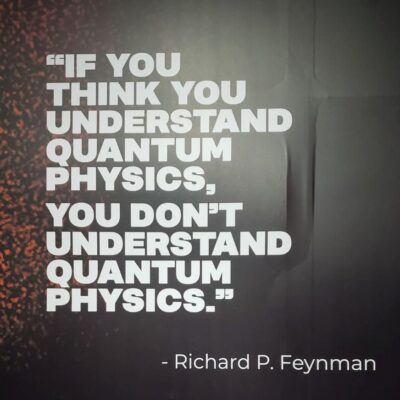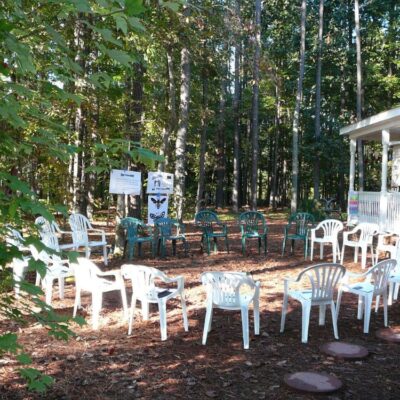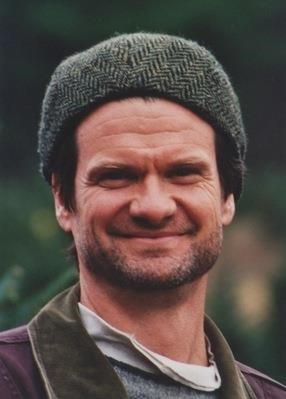
“I really don’t know what to do now” – said my new client, looking depressed at the desk in front of him. “I’ve really tried everything.” The man was visibly affected, sitting slumped in his chair and making no secret of his perplexity. Unusual for an executive. For me, admirable and the prerequisite for solving his problem.
This was my first conversation with Mr. Klar (name changed for confidentiality). I had been recommended to him with the words: “If anyone can help, it’s Sabine Bredemeyer.” This was very flattering to me, but when I finally understood what the task was, I started to have slight self-doubt.
At 45 years of age, Mr. Klar was an experienced business leader who had already led other companies to success with empathy and competence. He had been managing director of the waterworks of a medium-sized town in northern Germany for a year and had taken on a difficult legacy. For more than 25 years, his predecessor, an ‘old-school boss,’ had played employees against each other, giving preferential treatment to some and bullying others. Distrust, resignation, resistance and service by the book were the prevailing behaviours in this company.
Even the receptionist. I could see that her inner resignation made it impossible for her to be friendly. The atmosphere I perceived in the long, dark corridors on the way to Mr. Klar’s office was more than oppressive. Gray-faced employees shuffled through the corridors without energy, and hardly anyone could get a greeting past their lips.
The boss is always the enemy
“The company is ailing and urgently needs renewal in almost all areas. For the past year, I’ve been trying to make it clear to my approximately 80 employees that I want to work with them to transform the waterworks into a modern company in which everyone feels good and can find joy in their work. And all I get is rejection, mistrust and resistance. No matter what I say, neither the managers nor the employees believe I really do intend to modernize the company, create better working conditions and a more pleasant working environment for everyone. I need my employees to do this – but it seems that I am talking to a brick wall. I am not succeeding in winning them over to the new way.”
Mr. Klar was not just an experienced business leader. Through his personal story, a serious cancer successfully overcome, he had understood what life is really about. I had rarely encountered the mixture of humanity, empathetic communication, and professional competence that I perceived in him. He was a real people person, had a great deal of understanding for his employees, and was very competent in modern organizational development. He understood that everyone was suspicious of a CEO after this history. However, he had hoped that over time the employees would understand that he was different and that they could trust him. But he didn’t succeed.
By this time, he reflected, “if I don’t manage to do that within the next few months, I think I’ll have to pull the plug. Working with pressure, as the people in this company seem to be used to, is far from my mind. But if we don’t pull together here soon, I won’t be able to save the waterworks, and I swore to myself after my illness that I wouldn’t wear myself out – because that was the reason I got cancer.”
I sensed his distress. And understood what he was struggling with. Once people have a certain filter of perception, it is well known that they have a hard time seeing and recognizing anything other than what comes through that filter. And here, Mr. Klar was dealing with a perception filter – apparently shared by all – that basically classified the leadership as an adversary, as an enemy, and as untrustworthy.
No matter what Mr. Klar said or did, the interpretation was always the same: “He only wants to exploit us,” “He’s only saying that because he wants us to work even harder,” “Who does he think he is?” However, since the company was public and the employees were civil servants, no one could be fired, and so the work performance, commitment and dedication of the employees had shrunk to a minimum. After all, ‘nothing could happen’ to them.
The experienced does not work
“I thought maybe you’d do a large group conference with everyone, and then I could talk to everyone at the same time, and they could talk to each other quite freely. These large groups are supposed to work wonders.”
Although I very much appreciate and always use the many different large group methods, it was clear to me that something quite different was needed here.
I think it is dangerous to hold a large group conference in a company with such a pronounced culture of mistrust, in a life-depleting climate. Here I thought such a method was inappropriate and counterproductive. The employees of this company could not all participate at the same time for 2 – 3 days anyway. A large group that was too short would possibly cause resistance and joint campaigns against the leadership to intensify. Also, the premise of the large group methods I work with is voluntary participation. And counting on these employees to come voluntarily to a conference called by the boss was rather wishful thinking here.
If one did not want to work with pressure here – as the previous boss had apparently done with moderate success – a large-scale rethinking was first necessary in this company. A process of awareness that would clarify misconceptions, misunderstandings and prejudices and thus possibly eliminate them.
But how?
“I think something other than a large group conference is called for here,” I heard myself say, completely unclear about what would work instead. I had never experienced anything like this before.
It was clear to me that Mr. Klar could not make an impact here until the staff really understood that he had positive intentions and did not think and act like his predecessor. It had to be made clear that not all supervisors intended to exploit employees, that they saw them as “subordinates to be used,” but that there were indeed leaders like Mr. Klar, a leader who recognized in his employees valuable people with high potential, precisely the potential needed to build a better future for customers and employees.
“I think we need to get at the belief systems of your employees. I think as long as they see you as they do now, you are powerless.”
“How are you going to do that? Are you going to coach them all? In one-on-one meetings? Make it clear to them who I am and what I intend to do?”
“No, not in one-on-one meetings”-and I was amazed at the thoughts I was now expressing-“I think I would give them the opportunity in workshops to realize that they are really misjudging you. To clarify for them how we humans ‘tick’ and talk about perceptual filters, belief systems, and communication tools. To break down the collective perception filters, I think it makes sense to create awareness among your employees about how such misconceptions come about and how to break them down. How we humans manage to rise above prejudices that benefit no one. I would also illustrate in this workshop what their future could look like if they embrace a new way of working and looking at things. But to do that, your employees need basic knowledge of human behaviour, psychological background, and the ability to get out of their own trap. And that means all your employees – all of them, without exception.”
As I spoke, Mr. Klar looked me in the eye, through me, and listened very carefully. I saw that this scenario was playing out in his mind’s eye, and he was immersing himself in the possibility.
“And that works?”
“Well, I’ve never had an assignment like this, and I can’t promise you. But I think it’s the only possibility.”
And Mr. Klar understood. I myself wondered about the fact that this would mean breaking one of my principles. The voluntary nature of participation. But the conviction was growing in me that this was a way to prepare the employees for the future that was to be shaped together. And of course, I couldn’t predict if it would work.
I was not really prepared for what was coming
In a nutshell: 7 workshops were scheduled for the 80 employees. One three-day one for the managers – who were as much in resistance with Mr. Klar as the employees – and 6 two-day ones for all employees. I asked that everyone – everyone without exception – be required to attend this workshop. Since I had previously demanded voluntariness in everything I did, this request was a gamble. I knew that voluntarism works when there is a good climate between leadership and employees in a company, and the employees are as interested in the success of the company as the leadership. In a public company like this, however, this interest was apparently nil. So, I took a chance.
We called the workshops “communication workshops” as neutrally as possible, and they were announced as a training measure with regard to the new corporate culture.
I had spent weeks designing these workshops, trying to put myself in the situation of the people. I developed a workshop concept that offered the participants information about communication and being human, many exercises but also a lot of free space – and all of course in a Whole Person Process container. The workshops were meant to make them realize how they had been manipulated by the previous boss so far and what appreciative communication at eye level means. It was important for me to let them see this difference and to enable them to recognize that their new boss had completely different values and attitudes than the old one. I was prepared as well as I could … but I was not really prepared for what awaited me.
Each workshop was a real challenge
With the first workshop, I realized that the challenge was greater than I could have ever imagined.
Our seminar location was a castle. This location was meant to express the appreciation that Mr. Klar had for his employees. The workshop began with a welcome coffee. I had set up a circle of chairs in my seminar room, had everything well prepared and was waiting, admittedly a bit nervously, for the participants.
When the first ones arrived, I approached everyone openly and greeted them with a smile. It was probably only decency, which made the men treat a woman ‘decently,’ that required them to greet me back. After that, those who did not fight openly gathered together and ignored me. The others stood alone or formed other little groups.
At 9 o’clock, I asked everyone to take a seat in the circle. If looks could have killed me, I would have dropped dead on the very first day of workshops.
Everyone involved knew I had been hired by the boss – the devil’s bride – and no one was there voluntarily. I was dealing with men here who had worked in this company for 15 to 28 years and had experienced leadership I couldn’t imagine being worse.
They had learned to always be on their guard, to stand apart, do only what was necessary to avoid attracting negative attention, and to avoid being put at a greater disadvantage by the leadership. Many of them, I knew from Mr. Klar, were enemies among themselves because they had been played against each other by the previous boss. Many had started as channel workers and worked their way up. Others still worked in the field and had to deal with wind and weather, dirty work and dissatisfied customers. I found myself facing people I had never consciously met before. Weather-beaten faces, muscle-bound bodies, suspicious, deliberately bored to openly hostile looks. If I had encountered them alone in the dark, I probably would have preferred to make myself invisible.
But here I had a job to do. And I was the leader of these workshops. Amazingly, in such moments I get an incredible strength, an inner steadfastness that nothing and no one can upset.
So I started by introducing myself and telling them why they were here. Quite openly, I told them that it was important to Mr. Klar to work with them on a common, successful future, that it was important to him to have them on board, that he didn’t know how to reach them, and that these workshops were meant to get everyone communicating openly and honestly with each other.
They sat there with their arms folded, either looking demonstratively out the window or scowling at me. Some were almost lying on the chair, clearly showing me their resistance. I could understand them so well. I knew from Mr. Klar that there had been a lot of criticism in the company about the title “Communication Workshop” with the words “Does he think we can’t talk, what does he think we’ve been doing here for the last 25 years …” And so I went into that and tried to tell them that I understood that that irritated them and annoyed them.
I don’t remember exactly what I said. But it was tremendously important to me to make it clear to these men who had experienced so much hurt and abuse that I really wanted to understand them. I told them that I condemned how unfairly and manipulatively the previous management had dealt with them and that I would like to understand their situation from their perspective.
The initial reactions were quite clear: some grinned derisively, and others shook their heads and said nothing at all. Then some went on the attack, yelling at me, “You? You have no idea!”
And I admitted that I could hardly imagine what they had been through in the last 25 years. “How are you going to judge what it’s like to get screwed. You’re a fine lady after all. You’ve never experienced shit like this before.”
I listened, didn’t object, and didn’t agree. I was here to understand. I really wanted to understand. Because how else could I have worked with them? I had a rough idea of what they had experienced But what it had been like for them, what they had felt, and how their workplace had affected them, I really couldn’t know. So I listened and was grateful that they revealed more and more about their experiences. At first, aggressively – as an attack. Then they noticed that I didn’t object but was honestly interested in understanding them. Gradually, everyone dared to say something. The energy in the room changed – the aggression turned into astonishment, amazement, mistrust and then … then I noticed a clear turnaround. Suddenly, they told me about all the injuries they had suffered, and the roles had changed. My heart ached, because more and more I understood how terribly these strong men had suffered. That they were – like every human being – emotional beings who had endured hellish agonies. And suddenly – so I thought to notice – I was no longer the bride of the devil but someone to whom one could pour out his heart. And this went on for 2 hours.
Listening and understanding broke the ice
I listened and did my best to understand what they had gone through. And they understood that I really wanted to understand. And then the ice was broken. After they understood that I was genuinely interested in their difficult past and they were willing to listen to me as well.
With that, I was able to facilitate the workshops that I had prepared. Within the WPPF container, with growing genuine contact, they quickly understood what had happened in the last 25 years, why they had been – as they themselves said – ‘screwed.’ They realized how they had been manipulated. And above all, how they could defend themselves against it in the future. They understood how we humans tick, how we manipulate each other and how we can protect ourselves against it. They realized that Mr. Klar actually trusted them, that he actually had something great in mind for them, and I witnessed some very touching moments.
In one of the workshops, which apparently included two archenemies, a scene occurred in the closing circle that I will never forget. One of the participants thanked me for what he was able to take away and suddenly turned to another participant: “Now that I have understood what our old boss did to us, I can see you, Willi, with completely different eyes. For 25 years, I fought you. And now, in these 2 days, I have seen that you are a really nice guy. And I want to apologize for everything I did to you. If I had known that the old man had played us against each other like that, I’m sure I would have seen it sooner. I’m sorry.”
Looking around the circle, I wasn’t the only one with tears in my eyes.
A successful change process
There would be sooo much more to tell about this assignment. So many more scenes that took place in the 7 workshops. Critical, dramatic, touching…and all of them resulted in everyone, Mr. Klar and his staff, finding each other.
All in all, it was a great success. Because: Mr. Klar was able to work with his employees after these workshops – in a new quality based on appreciation and trust. They had understood who he was and what he was up to. These workshops had touched and moved them. All of them expressed gratitude in their own way. And in gratitude, they developed a loyalty to Mr. Klar and the company that made the following successful development possible.
At the end of the 7 workshops I felt connected to all of them as if they were my own family. I was exhausted after each workshop but overjoyed because wounds that had been inflicted over 25 years could suddenly heal, and each of the participants had grown close to my heart because they had shown me their vulnerability and trusted me.
And Mr. Klar made the waterworks into a model company that became a role model for many others. Thanks to the trusting and devoted support of his loyal employees, who understood who he really was and did everything they could to succeed together with him.
And I still think back today – 10 years later – with gratitude for this extraordinary mission.
Photo by Michal Matlon on Unsplash










Elisabeth
What a beautiful Story,
Thank you Sabine